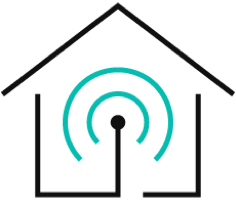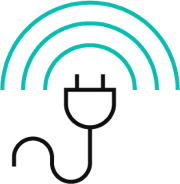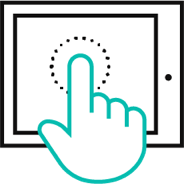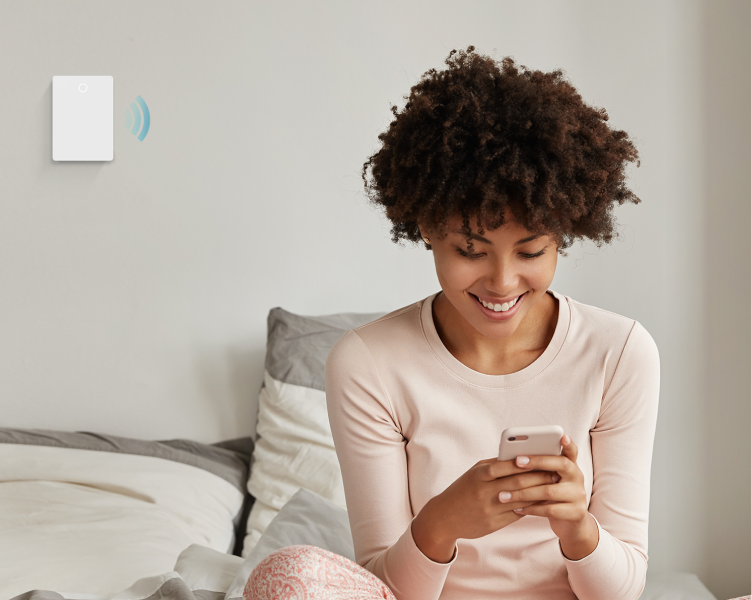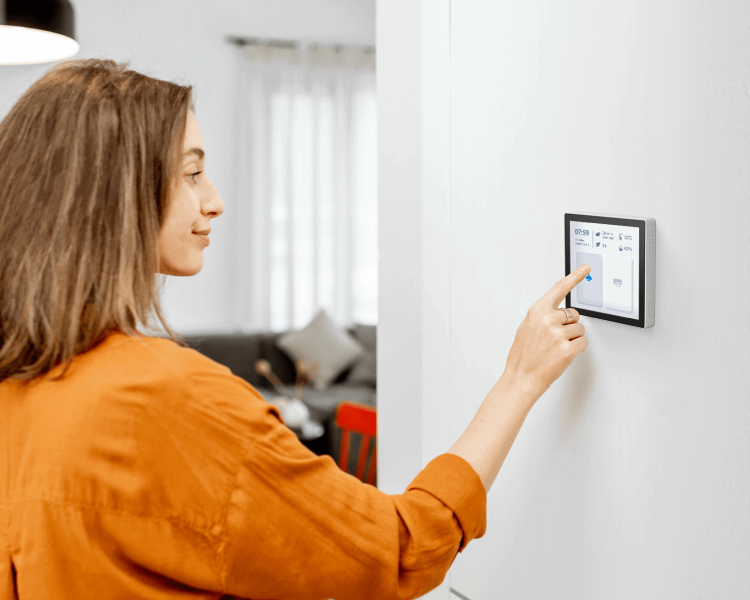As the demand for smart home technology rises, homeowners seek efficient ways to streamline their smart home experiences. As per Oberlo, 63.43 million homes in the US actively use smart home devices. However, with the abundance of smart home devices, there's a need for a smart home hub. That's where a Z-wave smart hub got you! A Z-wave smart hub is a centralized control system that connects and manages many smart devices.
It's compatible with plenty of brands, so you can enjoy a seamless integration, eliminating device incompatibility issues. These hubs operate on low-power radio frequency, so you don't encounter connectivity issues. Moreover, Z-wave smart hubs combine automation and a user-friendly interface. This provides you with the convenience and efficiency you want in your smart home ecosystem. Let's discuss a Z-wave controller and how you can set up yours!
Understanding Z-wave Smart Hub
A Z-wave smart hub serves as a communication center for various smart gadgets using the Z-wave wireless protocol. In a Z-wave mesh network, the hub is the primary controller, typically connected to the internet, and controls all the connected Z-wave devices. The Z-wave hub communicates with other compatible devices via radio waves. You can use a dedicated smartphone app or web interface to monitor and control all your Z-wave devices remotely.
For instance, you can turn lights on/off, adjust thermostat settings, receive notifications from sensors, etc. This hub operates in the 800 to 900 MHz frequency range and has lower power consumption. Moreover, Z-wave supports a large number of devices in a single network, typically up to 232 devices.
Lastly, Z-wave smart hubs are compatible with a wide range of Z-wave-certified devices. But remember that not all smart home devices use the Z-wave protocol. Some devices may use other protocols like Zigbee, Wi-Fi, or Bluetooth. If you already have smart devices, it's essential to check their compatibility with the Z-wave hub you are considering.
Advantages of Z-wave Smart Hub
Let's discuss some advantages of a Z-wave smart hub:
- Extensive Range: A Zwave smart home hub offers you an extensive wireless range, communicating with all the smart home devices quickly. Its range is around 330 feet in open space and 150 feet indoors.
- Energy-Efficient: Z-wave devices are energy-efficient, minimizing power consumption and extending battery life. This ensures battery-powered devices operate for prolonged periods without frequent replacements or recharging.
- Easy Set Up: Z-wave smart hubs feature an easy setup process that simplifies the integration of smart devices. The instructions are straightforward, and you can quickly connect and configure your devices without requiring extensive technical knowledge.
Key Features and Benefits of Z-wave Smart Hub
Here are some benefits and key features of a Z-wave smart hub:
1. Automation and Scheduling
One of the significant advantages of a Z-wave smart hub is its ability to automate and schedule various actions and events. All it takes is you to custom rules and scenes to automate tasks based on specific triggers or schedules. For instance, you can set your lights to turn on automatically when you enter a room or have your thermostat adjust the temperature based on your daily routine.
2. Integration with Voice Assistants
Many Z-wave smart hubs integrate with popular voice assistants: Amazon Alexa and Google Assistant. So, you can control your Z-wave devices through voice commands, adding an extra layer of convenience. For instance, you can give voice commands like "Alexa, turn on the AC," and have your room cooled down within seconds.
3. Remote Access and Monitoring
A Z-wave smart hub also provides remote access capabilities, letting you control and monitor your smart home even when you're away. You can utilize a dedicated mobile app to check the status of devices, receive notifications, and make adjustments from anywhere.
4. Energy Efficiency
Z-wave smart hubs often include energy monitoring and management features. You can track and control the energy consumption of individual devices or groups of devices. This aids you to identify energy-saving opportunities and reduce your overall utility bills.
Setting Up a Z-Wave Smart Hub
Properly setting up your Z-wave smart hub is important to build a smart home. However, before setting up your Z-wave smart hub, you should select the one that suits your needs.
How to Choose the Best Z-wave Smart Home Hub?
Compatibility
First things first! You should make sure that the hub supports the Z-Wave protocol. The hub needs to be compatible with all the devices you plan to use so you have a seamless home automation experience!
Key Features
Different hubs offer varying features and capabilities. So, before purchasing any Z-wave smart hub, consider what functionalities are important to you. These are voice control support, mobile app integration, scene creation, or third-party device compatibility.
Scalability
Select a hub that can accept a large number of devices if you intend to expand your smart home setup in the future. Why? Because some hubs have limitations on the number of devices they can support, and checking this beforehand can save you from investing in another hub!
User Interface
You must check the hub's user interface through the mobile app and web interface. Ensure it offers an intuitive and user-friendly experience that doesn't require any technical expertise to explore.
Some popular Z-wave smart home hub options are:
- EVVR Center Lite
- Aeotec Smart Home Hub
- SmartThings Hub by Samsung
EVVR Center Lite
EVVR Center Lite is the ultimate Z-wave smart hub that brings versatility and unmatched control to your smart home. With EVVR Center Lite, you can seamlessly connect and manage all your Z-Wave-enabled devices, making it the best choice for an exceptional home automation experience.
One of the standout features of EVVR Center Lite is its wide-ranging compatibility. Not only does it support Z-Wave, but it also integrates effortlessly with Zigbee 3.0, Sub-1 GHz Proprietary Protocol, BLE, and Wi-Fi connections. This means you can consolidate multiple protocols from various smart home brands into a unified system.
Regarding data security and privacy, EVVR Center Lite goes above and beyond. Your data is processed and stored locally using enterprise-class encryption. This approach ensures that your personal information remains confidential and your smart home stays secure. In addition, EVVR Center Lite has plans to support integration with Google Home in the future, providing you with even more compatibility and convenience. With its support for Zigbee, Z-Wave, BLE, and Wi-Fi connections, EVVR Center Lite is the ideal choice if you want to integrate multiple protocols from various smart home brands into your home automation setup.
Key Features
- Connect smart devices via Zigbee 3.0, Sub-1 GHz Proprietary Protocol, Wi-Fi, or Bluetooth
- Compatible with Matter, ensuring long-term compatibility
- Offers enterprise-class data encryption and real-time local storage for enhanced privacy and security
- Intuitive EVVR Console for easy device configuration, home automation management, and user organization
- Future compatibility with Google Home for expanded integration options
Steps to Set Up the Z-Wave Hub
Once you have chosen a Z-Wave hub, follow these general steps to set it up:
Step 1: Unbox and Connect
Unbox your Z-Wave hub and connect it to a power source using the power adapter. Connect your Ethernet cable from the router to the hub if it requires a wired connection.
Step 2: Network Configuration
Follow the hub's instructions to configure the network settings if necessary. This may involve connecting to your Wi-Fi network or assigning an IP address.
Step 3: Hub Registration
Some Z-wave hubs require registration with the manufacturer's platform or mobile app. Download the app, make an account if necessary, and follow the instructions to register the hub.
Step 4: App Setup
You need to install the hub-compatible app on your smartphone or other smart devices. Once installed, open the app and sign in using your account credentials.
Step 5: Adding Z-Wave Devices
Follow the hub's instructions for adding Z-Wave devices. Typically, this involves putting your devices into pairing mode and using the app to search for and add them to your hub.
How to Pair or Add Z-wave Devices?
To pair and add Z-Wave devices to your smart hub, start by putting the device into pairing or inclusion mode as instructed by the manufacturer. Then, open the hub's mobile app and navigate to the device pairing section. Initiate the pairing process and follow the app's instructions, which may involve scanning for nearby devices or selecting the device type.
Now, put the Z-Wave device into pairing mode. Once the hub successfully identifies it, confirm the pairing and assign a name or location. Repeat this process for each device you want to add, and explore the app's features for further configuration and control options.
Exploring Use Cases of a Z-Wave Smart Hub
Here are some real-life use cases of a Z-Wave smart home hub:
Morning Routine Automation
One of the best uses of a Z-wave smart hub is that you can set it up to automate your morning routine. For instance, when your alarm goes off, the hub can turn on the bedroom lights, play your favorite music, and adjust the thermostat to your desired temperature. This creates a pleasant and automated start to your day.
Enhanced Security
Integrating Z-Wave sensors and door locks with your smart home hub enhances your home's security. You receive instant notifications on your smartphone if a window or door is opened unexpectedly. Moreover, the hub automatically locks the doors, arms the security system, and turns on outdoor lights when you leave or go to bed.
Vacation Mode
Before leaving for vacation, you can use the Z-wave smart hub to create a "Vacation Mode" that simulates occupancy. It'll turn Z-Wave lights and security systems on and off, open and close curtains, and even play music or TV sounds to give the impression that someone is home. All this helps to deter potential burglars and improve the security of your property.
Future of Z-Wave Smart Hubs
The future of Z-wave smart hubs is expected to witness several trends, integrations, and innovations. Firstly, there will be increased interoperability and compatibility with other smart home protocols, allowing Z-Wave hubs to communicate seamlessly with devices using different communication standards. This will enable users to have a unified and integrated smart home experience.
Moreover, the advancements in AI and machine learning will enhance the intelligence and automation capabilities of the Z-Wave hub. These hubs then quickly learn and adapt to user preferences and patterns. In the future, there will be a focus on enhanced security and privacy features to address concerns regarding the protection of smart home data.
Conclusion
A Z-wave smart hub is a good investment as it monitors and connects all your smart home devices. The best Z-wave smart hub for your home is none other than the EVVR Center Lite. It's versatile and compatible with various protocols like Zigbee, Z-Wave, BLE, and Wi-Fi. Moreover, in the future, it will be compatible with Google Home, setting your smart home up to new heights.
EVVR also has other smart home products - EVVR Energy Monitoring Smart Plug and Relay, EVVR In-Wall Relay Switch, EVVR Pad S, etc. Our products feature advanced technology and satisfy the needs of smart home enthusiasts. So, contact us and get your hands on your favorite innovative home product now!

